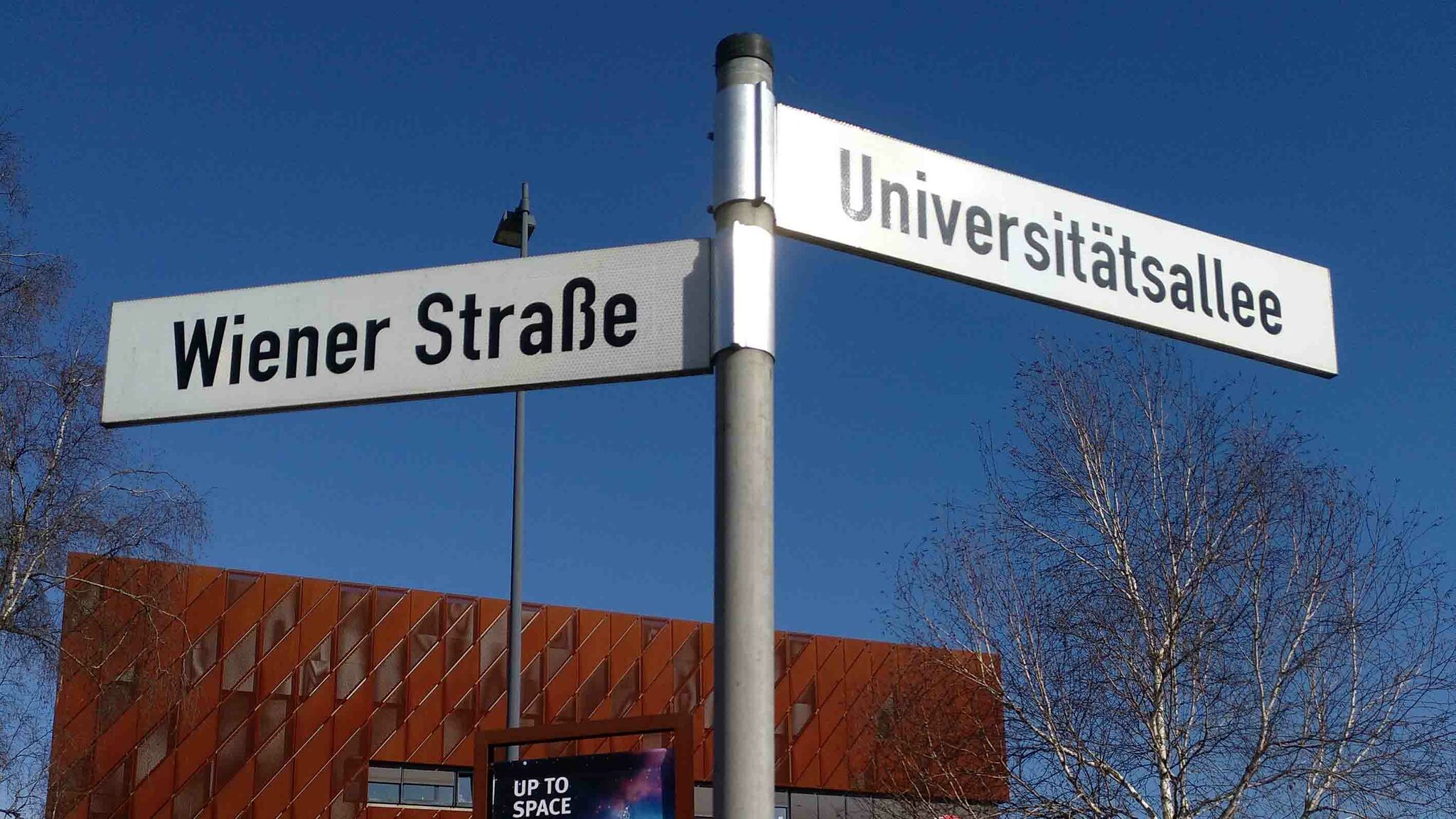
© Foto: Sigrid Dauks / Universität Bremen
Back Then: The Long Path to Street Names
Male names, neutral solutions, or functional terms? The street names were discussed intensely during the construction of the “neighborhood university”
It was as early as the middle of the 1960s – before the first breaking of the ground – that the Bremen Senate discussed the street names for the area where the university was to stand. The senate was in favor of naming the roads after significant public figures, especially in order to honor the late Federal President Theodor Heuss. However, it all turned out quite differently.
In May 1971, the Senator for Construction presented an initial list of names, according to which only male public figures were to be immortalized at the university. The suggested names were met with approval from the responsible entities – the Senator for Education, the State Archive as a supervising body, and Horn-Lehe Council. The university, which only holds the right to be heard as a resident, made a case for relevant non-personal names and suggested field names “that are analogue to the usual street names in this area, such as ‘Achterstraße’.”
Round 1: Personal Names in Discussion
Yet that idea was rejected, as there were not enough water body names or field names available. However, the State Archive pitched geographic or maritime terms as a ‘neutral solution’. The university immediately took on the latter suggestion, as naming based on public figures was categorically rejected. “The intended personal names were met with disapproval by university teaching staff and students.” At the same time, it was to be expected that the suggestions made by the university would not be approved by the other involved parties.

© Universitätsarchiv
The Senator for Education and Senator for Construction were in favor of a mutual solution and also appealed for non-personal names. A majority was, however, not reached by their colleagues. On October 10, 1972, the senate decided that the “streets in the vicinity of the university were to be named after significant public figures.”
Round 2: Functional Names
Whilst the responsible authorities acted according to the ruling, a new suggestion was being developed at the university and was subsequently presented to the Senator for Construction in May 1973. These names were to have a directing function – thus, the streets were to be named after the buildings to which they led, “Bibliotheksstraße” (Library Road) or “Mensastraße” (Mensa Cafeteria Street) for example. At the point where an agreement was no longer on the horizon, the University Executive Board additionally advertised an in-house university competition, in which readers of the ever-reporting local media also involved themselves.
“Bibliotheksstraße” was actually meant to have an entirely different name but going down that path again with the authorities was not desired.
Final: Austrian City Names
On April 2, 1974, the Bremen Senate finally revoked their previous ruling from 1972. Now it was possible for the university streets to have non-personal names. After further consultation, the involved parties agreed on the naming after Austrian cities, as was planned for the residential area that was to be constructed in the Blockland district. On June 3, 1975, the Bremen Senate approved the submitted list.
However, the list included three exceptions: “Universitätsallee” and “Hochschulring” for both the big access roads and – to the annoyance of the university planners – “Bibliotheksstraße” for the road leading to the central area of the university. They had not planned for this name but they did not want to go down the “long bureaucratic path” again.